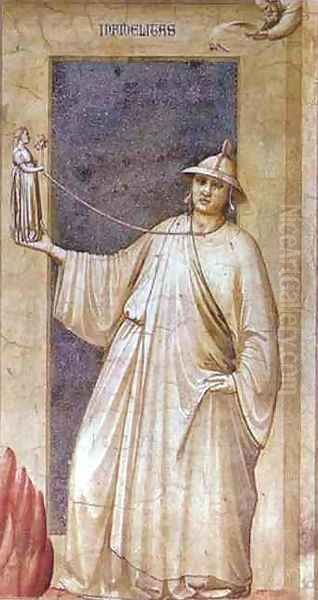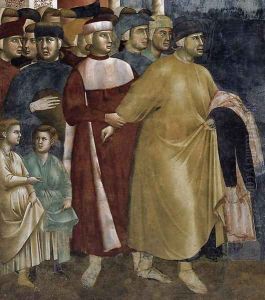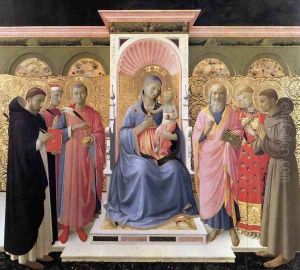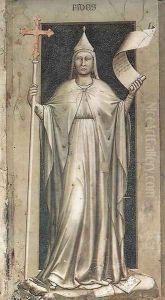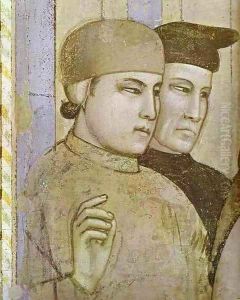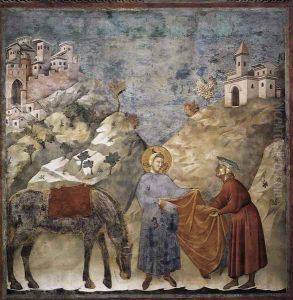





Idolatry 1302-1305
-
About Reproduction
Discover the allure of art with our faithful reproduction of "Idolatry 1302-1305", originally brought to life by the talented Giotto Di Bondone. Unlike posters or prints, our hand-painted oil painting breathes an unique sense of depth and texture into your space. Every detail, every stroke, and every texture is meticulously recreated, paying the perfect homage to Giotto Di Bondone and his artistic vision.
Owning this piece is more than just decoration - it's a statement of your refined taste in art. Let the vibrant colors and intricate details of this replica serve as a daily reminder of the beauty in our world. Elevate your decor and appreciate the richness of art with our replica of this masterpiece.
-
Painting Description
"Idolatry" (1302-1305) is a fresco by the Italian painter Giotto di Bondone, part of a series of 28 frescoes known as the "Scrovegni (Arena) Chapel frescoes" located in Padua, Veneto, Italy. This particular fresco is one of the seven vices depicted in the lower register of the north wall within the chapel and serves as a counterpart to the seven virtues painted on the opposite wall. Giotto, renowned for his contributions to the Italian Renaissance, is celebrated for his innovative approach to painting, which brought increased naturalism and emotional depth to the art of his time.
The "Idolatry" fresco illustrates the vice of excessive or blind adoration towards idols or false gods, a theme rooted in Christian theology that warns against the worship of objects or beings other than the one true God. In this work, Giotto personifies Idolatry as a figure worshiping a golden idol, a representation that would have been easily understood by contemporary viewers as a caution against the moral dangers of valuing material wealth or pagan entities over spiritual devotion.
Giotto's frescoes in the Scrovegni Chapel are considered masterpieces of the Early Renaissance, and his work on the vices and virtues cycle is particularly noted for its didactic purpose and its role in the moral education of the chapel's visitors. The frescoes are also significant for their artistic innovation, as Giotto broke away from the stylized Byzantine traditions of the time, instead opting for more realistic representations of space, volume, and human emotion. "Idolatry" exemplifies these advancements through its use of three-dimensional figures, expressive faces, and a clear narrative structure.
The Scrovegni Chapel frescoes, including "Idolatry," were commissioned by the wealthy banker Enrico Scrovegni, likely as an act of atonement for the sins of usury committed by his family. The chapel and its frescoes were consecrated on March 25, 1305, and have since been recognized as a pivotal work in the history of Western art. Today, the frescoes are preserved as part of the Museo Civico of Padua and remain a subject of extensive art historical research and conservation efforts.
-
Lead Time & Shipping
When you order this oil painting replica, it typically takes 2-3 weeks to paint. If the artwork is more complex, it might need a little more time to ensure the best quality. Once it's ready, we'll send you a photo for your approval. After you give the green light, we'll ship it to you for free.
-
Return & Refund
We believe in the quality of our hand-painted oil painting reproductions, and your satisfaction is our priority. If for any reason, you are not completely satisfied with your purchase, we offer a 45-day return policy. You can return your artwork within 45 days of receipt and receive a full refund. Please note that the artwork must be returned in the original packaging and in the same condition as it was received.
